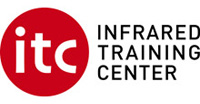Asbestos was a popular ingredient in building materials for many years because of its indestructibility, insulating properties, tensile strength and low electrical conductivity. It is still used today, but a distinction is made between more and less dangerous Asbestos-Containing Material (ACM). More dangerous ACM can release asbestos fibers into the air where they can be inhaled and cause illness. Less dangerous ACM generally coats or encapsulates the asbestos fibers with cement, plastics, or asphalt so that they are not easily released into the air. The more dangerous ACMs have been banned or voluntarily replaced to a large degree, while some of the less dangerous ones remain in use.
Friable Asbestos-Containing Materials are defined as those materials containing more than 1% asbestos which could be crumbled, pulverized or reduced to powder by hand pressure when dry.
Non-friable Asbestos-Containing Materials are generally regarded to be a less dangerous form of ACM, not very likely to release asbestos fibers into the air. A non-friable ACM is a material containing more than 1% asbestos but not able to be crumbled, pulverized or reduced to powder by hand pressure when dry. Non-Friable ACM are much more durable because they are held together by a binder such as cement, vinyl or asphalt etc…
The terms “friable” and “non-friable” are not necessarily meant to pertain to a particular material for its entire lifetime. Some materials will always be friable by their nature, particularly the lightweight uncapsulated ACM once used for insulation. Non-friable ACM can become friable if it is damaged or worn enough. Cutting or grinding or sanding a non-friable material like asbestos-containing cement, as the homeowner might do during renovation, for instance, would create large amounts of dust which might contain significant amounts of asbestos fibers which had been freed from their binding material by the pressure exerted by power tools.
Common Asbestos Building Materials
- STEAM PIPES, BOILERS, and FURNACE DUCTS insulated with an asbestos blanket or asbestos paper tape. These materials may release asbestos fibers if damaged, repaired, or removed improperly.
- RESILIENT FLOOR TILES (vinyl asbestos, asphalt, and rubber), the backing on VINYL SHEET FLOORING, and ADHESIVES used for installing floor tile. Sanding tiles can release fibers. So may scraping or sanding the backing of sheet flooring during removal.
- CEMENT SHEET, MILLBOARD, and PAPER used as insulation around furnaces and wood burning stoves. Repairing or removing appliances may release asbestos fibers so may cutting, tearing, sanding, drilling, or sawing insulation.
- DOOR GASKETS in furnaces, wood stoves, and coal stoves. Worn seals can release asbestos fibers during use.
- SOUNDPROOFING OR DECORATIVE MATERIAL sprayed on walls and ceilings. Loose, crumbly, or water-damaged material may release fibers. So will sanding, drilling, or scraping the material.
- PATCHING AND JOINT COMPOUNDS for walls and ceilings, and TEXTURED PAINTS. Sanding, scraping, or drilling these surfaces may release asbestos.
- ASBESTOS CEMENT ROOFING, SHINGLES, and SIDING. These products are not likely to release asbestos fibers unless they are sawed, drilled, or cut. These products have been used extensively in some areas of the world.


